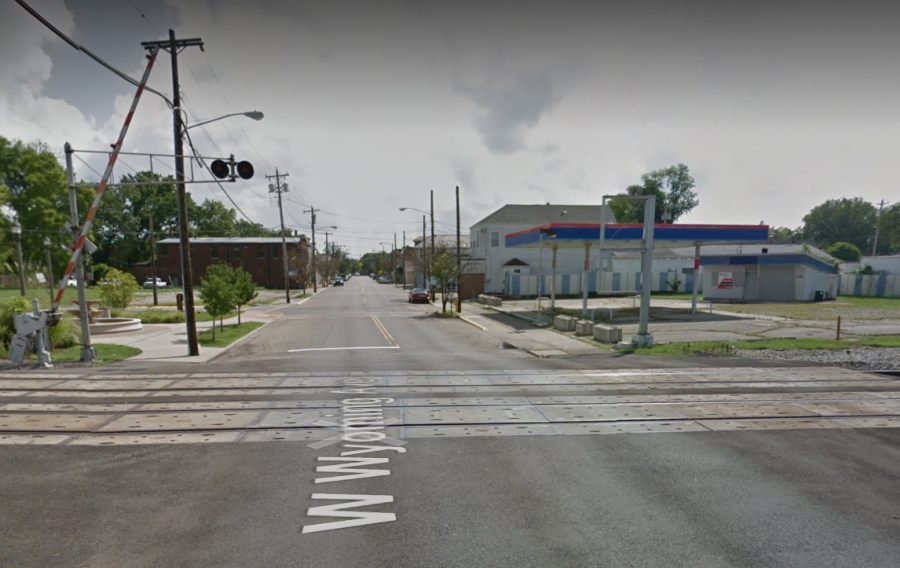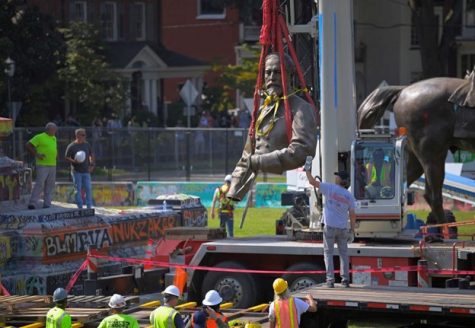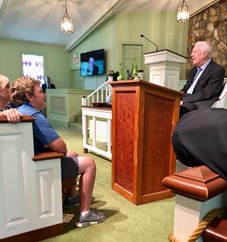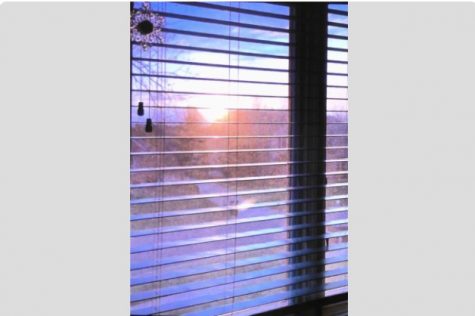Lincoln Heights: What Happened to the Black Wall Street of Cincinnati?
December 12, 2017
By Jordann Sadler ’18, Perspectives Section Editor
The Village of Lincoln Heights, which for most of its history has been majority black and today is still 95% African-American, went from being the “first African American self-governing community north of the Mason-Dixon line” to becoming a deprecating ‘hood’. Lincoln Heights was founded in the 1920s as a suburb for Black homeowners. In 1946, it was incorporated as a village. Before the 1970s, Lincoln Height’s population was around 6,000. The town’s population rapidly decreased. For the past seven years, Lincoln Height’s population has been relatively constant at 3,000 people, only fluctuating slightly. So, what happened to this once self-sustainable village? Red-lining. Not only is the African-American community suffering, but the poor, white community of Lockland also under the same pressure.
Just south of Lincoln Heights is the Village of Lockland. The village is 64% White and 29% African-American. During their prime and prosperous times, Lockland and Lincoln Heights were in competition with each other. Lockland, plotted in 1828 by Nicholas Longworth and Lewis Howell, thrived as it was located on the Miami-Erie Canal. The Canal was replaced during the I-75 highway construction in 1940. As a result, both Lockland and Lincoln Heights went into a state of disarray. Go on Mangham Dr. and you can see GE’s Christmas lights from Taco Bell and Wendy’s.
West of Lockland is Wyoming: a considerably nicer, more-organized town. Going down Wyoming Ave and passing the Wyoming Fine Arts center are a set of train tracks separating Lockland from Wyoming. The first thing you see when you cross the train tracks from Wyoming is an abandoned gas station to your right and a small fountain to your left. Farther along the road, there are abandoned buildings (which still have signs of a deserted businesses), a weave and hair shop, a bar, and a small African market/convenient store similar to a 7/11.
Cross the train tracks leaving Lockland you see a sign reading ‘Wyoming’, small cafés, a florist, and other community businesses. As I said before, the Wyoming Fine Arts center is also near these tracks.
Wyoming has a non-white population of 12.7%. Taken from the Wyoming, Ohio website, the Median Home Value in Wyoming is about $280,000 with the median family income being $108,000. Meanwhile, the Median Household income in Lincoln Heights is around $25,500. The relatively expensive costs of Wyoming housing make it impossible for families in both Lockland and Lincoln Heights to afford nicer living spaces. Why are its neighbors struggling? And why aren’t there measures to help the neighboring places? The red-lining is not only in housing, culture, and location, but in education too.
According to the 2000 Census, 96.6% of the Wyoming population are high school graduates or higher, 68% have a bachelor degree or higher. Also, according to the 2000 Census, 82.9% of the Lincoln Heights population are high school graduates or higher. Many did not go farther than an associate’s degree, as only 5.6% have a bachelor degree or higher. Lincoln Heights does not have its own high school—Princeton is the next middle school and high school. Evendale, Glendale, Heritage Hill, Sharonville, Springdale, Stewart, Woodlawn, Lincoln Heights—these places/villages have neither a middle nor a high school. All the students go to Princeton. Wyoming has an elementary school, a middle school and, of course, a high school. Lockland, having a better opportunity, also has PreK-12 schools, but they are not up to par with the nationally ranked Wyoming schools.
Want to go to Wyoming High School, ranked #2 public school in Ohio behind Walnut Hills and ahead of Indian Hill High School? Want to go a ranked #95 high school in the nation? “To be eligible for enrollment, you must reside within the school district boundaries and demonstrate proof of residence as outlined in the online registration process.” Almost all public high schools today require proof of residency. Only a small handful of public high schools in Ohio have Open Enrollment. All this does is restrict students from reaching their full potential. A student who is accelerating in Lockland High School who wants to go to a better, more rigorous school such as Wyoming must either move (which is nearly impossible, due to the vast difference in home costs) or suffer through a school that does not cater to their needs. The cycle of neglect results in a population of students who mature into this world with a lack of education, leadership, encouragement, determination, progress and academic knowledge. Students in these situations must work ten times as hard to achieve their dreams. This destitution can lead to them making bad choices: drugs, dropping out, criminal activity. Stereotypes and racial profiling are created this way. It is the biggest burden to put on the African-American youth (and students of color in general), who already have a foot in the grave for having a different skin color. Now a whole generation, a whole culture must catch up before trying to further develop itself. The sadder underlying theme of this whole situation, is that these poor communities did have the ambition, the knowledge, and the leadership until taken away by higher forces.
Our black wall street was taken away from us. Disregarding whether one supports a black-owned community or not, it is still sickening to see the deprived state of Lincoln Heights today compared to what it used to be. Although, Lincoln Heights wasn’t burned to the ground like Greenwood in Tulsa, Oklahoma, red-lining and racial separation certainly devastated what was once a prosperous community.
Sources Used:
www.vlho.org ; www.theatlantic.com ; www.locklandoh.org ; www.wyomingohio.gov ; www.census.gov ; google maps ; www.usnews.com ; www.wyomingcityschools.org ; www.princetonschools.net














Kimberly Isler • Feb 7, 2021 at 8:34 am
I live in North Carolina and reading this documentary on Lincoln Heights was very interesting. Most interesting because I had the delightful pleasure of meeting a gentleman who is now my very best friend over 30 years ago from Lincoln Heights. He was stationed at Seymour Johnson Air Force base. He now holds a doctorate degree in post secondary education. His name is Dr.Delmar Lee.His mother’ was over 100 years old when she passed away some years ago.. I don’t know to be exact but there were lots of siblings raised By her and every one of them have degrees. Some attorneys Some in the medical Field etc.Dr Lee’s story is remarkable of Loveand survival.
S. L. • Jul 14, 2020 at 2:03 am
This is so true for Lockland and Lincoln Heights, I grew up in Lincoln Hts in the ’60s & never wanted for anything outside of my community, as a matter of fact, people came from everywhere else for the luxuries of Lincoln Heights. We had 2-3 BBQ stands, Soul Food restaurants, best skating rink in the city, Fish Bar was off the hook, LHMBC Mega Church & every other corner there were other churches as well, Funeral Home, The Social life & Entertainment were good with minimum violence, we ventured to a movie theatre in Lockland, nightlife was good there too, violence again was rare, a 5 & Dime every other street, Moxley was a store to get good cuts of meats & had a great reputation for a small grocery store, the police department was friendly, I was told that at 1 time Lincoln Heights had a post office, I never experienced that but everything I have listed I did, I loved growing up in Lincoln Heights! A great city in the ’60s